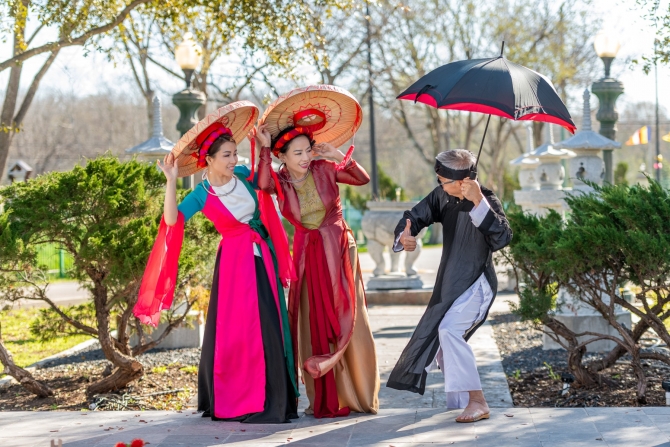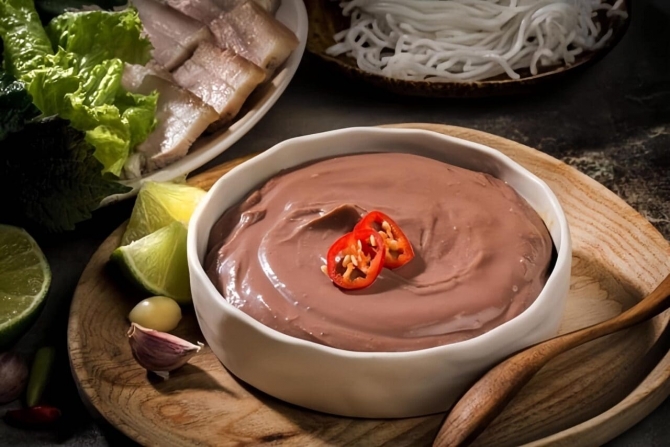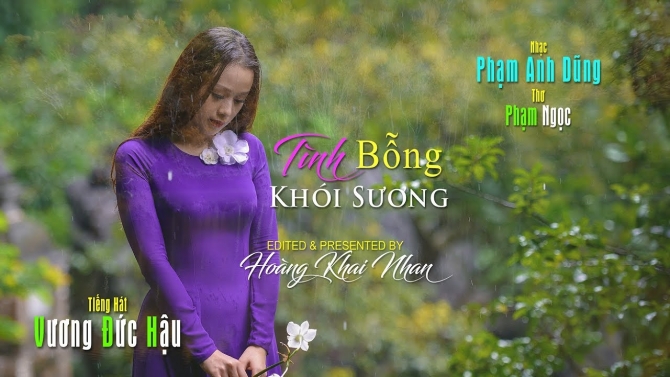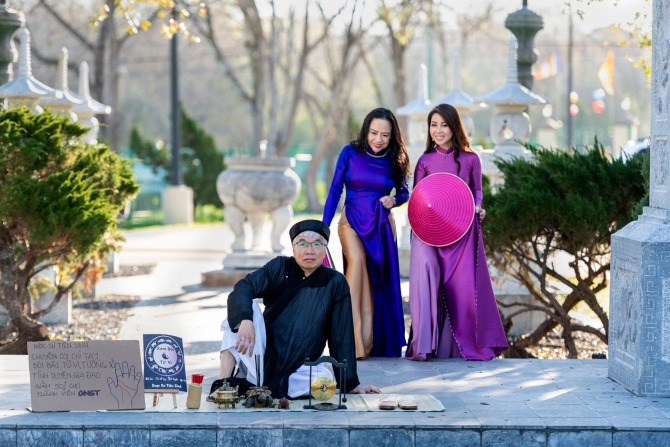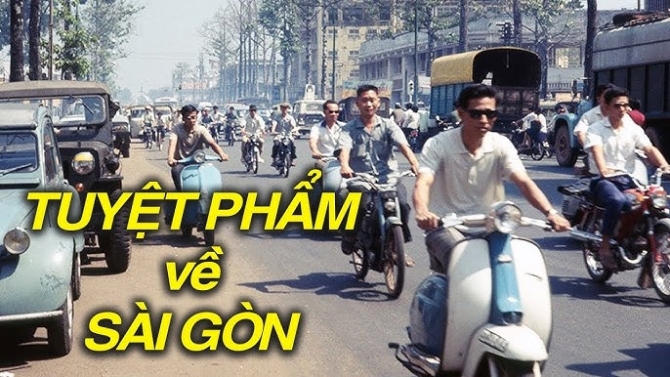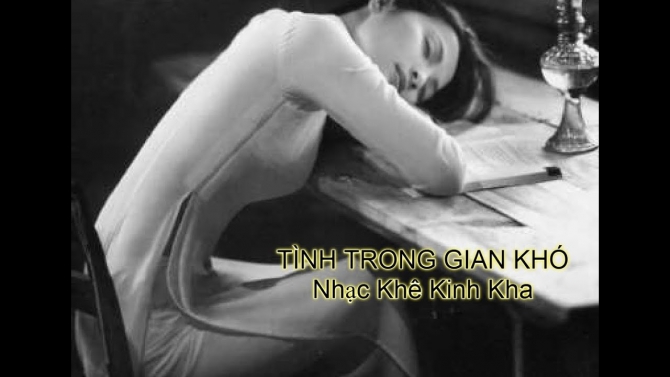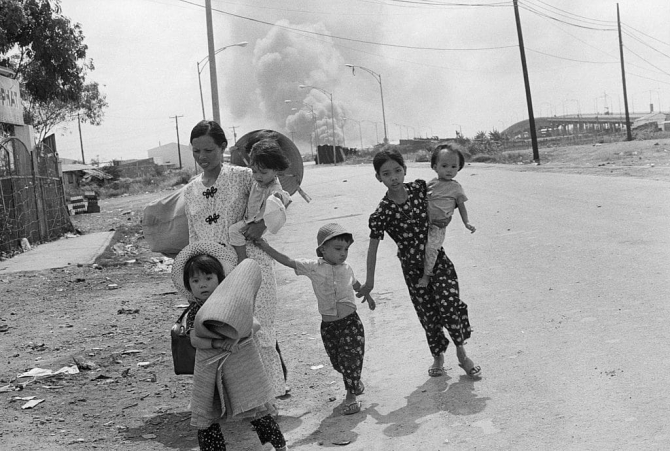CULTURAL CONFRONTATION - Thầy lưu như hải
- Đăng tại Văn học
- Viết bởi Nguyễn Ngọc Quang
CULTURAL CONFRONTATION
Intended for advanced level Vietnamese students of ESL, Third-generation Vietnamese who do not major in Comparative Linguistics, and students of Vietnamese as a second language.
Note: You are about to read an updated, ameliorated version of my presentation to the English teaching staff at the Consolidated Civilian Personnel Office (formerly Training Center for civilian employees), US Naval Support Activities, ICTZ, Viet Nam, 1971.
It goes without saying that language is a matter of habit and that the language of such and such country cannot be separated from its culture. Before going into details let us examine the following phenomena:
(a) In the monosyllabic Vietnamese language, the verb forms have no inflections and remain the same for the present, the past, and the future tenses. An auxiliary verb like đã (to form the past tense) or sẽ (future tense) is optional because a time indicator like hôm qua (yesterday), hôm nay (today), or ngày mai (tomorrow), etc., orthe context itself already shows/implies what specific tense is involved.
The time indicator is usually in the front position in a sentence.
NB: Under the unique circumstance below, the tense shifts from the past to the future simply by switching the positions of the time indicator.
Past tense: Anh về nhà hôm nào? Literally, [On] what day did you come back home?
versus
Future tense: Hôm nào anh về nhà? Literally,[On] what day will you come back home?
(b) In the polysyllabic English language, the verb forms have inflections ─ sometimes in combination with an auxiliary verb ─ to indicate a particular tense. The time indicator is usually in the final position in a sentence.
At this point there arises an interesting question as to whether the existence of tense-specifying verb forms reflects the American habit of punctuality and whether the absence of the corresponding grammatical features leads to the Vietnamese tendency of tardiness. The contrast can be seen in the following illustration. When you receive a Vietnamese invitation card that reads “... the wedding reception [at XYZ Restaurant...] starts at 6 PM ...”, you expect to see many Vietnamese guests arrive at the restaurant around 7 PM and most Americans waiting there since 6 PM. And the Vietnamese wedding reception may begin around 8 PM.
The next question is, “Why so?” A possible answer might be, “It’s cultural confrontation!” Translated, “Language is a habit, an element of a particular culture; and a certain language with or without specific verb tense forms may or may not lead to punctuality.” This supposition has not been scientifically verified but at least it shows some relationship between language and culture.
A closer look at the Vietnamese popular habit of tardiness takes us to the fact that Viet Nam historically is an agricultural country where farmers live in psychological time instead of physical time. I neither mean a certain habit is good or bad nor maintain a particular language is better than others. I simply would like to observe the similarities and differences of English and Vietnamese together with their corresponding cultures in hopes of expediting the process of adapting myself to the new cultural environment of the target language.
Apart from the habit of being punctual or tardy, there remain many other noteworthy issues including but not limited to the word order, the absence of personal subject pronouns, the omittance of linking verbs, the English articles versus the Vietnamese classifiers, the family kinship/social relationship terminology, brevity versus wordiness, the sign laguage, etc. All of those things and others contribute to the natural cultural friction that ESL learners, Third-generation Vietnamese who do not major in Comparative Linguistics, and American learners of Vietnamese as a second language need to know so as to “do as the Romans do when in Rome”.
1. WORD ORDER.
1.1.English and Vietnamese word orders are sometimes the reverse of each other.
In the mindset of English speakers, the second word in a set of two words conveys the main idea while the first word simply modifies the second one. Vietnamese speakers think the other way around. As a result, misunderstanding/confusion may arise from such combinations as blue sky/sky blue, snow white/white snow, horse race/race horse, new brand/brand new, etc.
Other reverse word-order examples are first/last names vs. last/first namesand month/day/year vs. day/month/year. A passenger bearing a US-issued ID/Passport may have trouble at a Viet Nam point-of-entry because of those reverse word orders.
1.2.Not all possible permutations of a set of Vietnamese words make sense but some
of them do. See a few examples below.
1.2.1. Most permutations of the set ăn, được, không exist in Vietnamese but
the permutations of their English equivalents (eat/eating, OK/be permitted, no/not) do not make a grammatically correct sentence .
Ăn được không? Literally, Is it edible? / Is it OK to eat?
Được ăn không? Lit., Am I permitted to eat?
Không được ăn. Lit., No eating/ Eating is prohibited.
Không ăn được. Lit., Inedible / One is not able to eat [because of sickness, for example].
Ăn không được. Lit. Inedible / One is not able to eat [because of sickness, for example].
Remark: “Được không ăn” does not make sense.
1.2.2. Possible permutations of the set câu, được, không, cấm (fishing, OK/permitted, no/not, prohibited).
Câu được không cấm. Lit., Fishing permitted/Fishing not prohibited.
Cấm không được câu. Lit., Fishing prohibited..
Được câu không cấm. Lit., No fishting.
Không được cấm câu. Lit., It is not OK/legal to prohibit fishing.
Không cấm câu được. Lit., It is not OK/feasible to prohibit fishing.
Cấm câu được không? Lit., Is it OK/legal/feasible to prohibit fishing?
Được cấm câu không? Lit., Is it OK/legal to prohibit fishing?
Remarks: Some other possible permutations of the set câu, được, không, cấm that do not make sense are not included in the above list.
The possible permutations of the English equivalents fishing, OK/permitted, no/not, prohibited do not make a grammatically correct sentence.
1.2.3. Possible permutations of the set câu, được, không, cấm, đâu
(fishing, OK/permitted, no/not, prohibited, at all/where):
Câu được không cấm đâu. Fishing permitted. Fishing not prohibited.
Câu không cấm được đâu. Fishing not prohibited at all.
Được câu không cấm đâu. Fishing permitted. Fishing not prohibited.
Đâu cấm không được câu? Where is fishing prohibited?
Đâu không được cấm câu? Where is “no fishing” prohibited?
Where is prohibition against fishing not permitted?
Không được cấm câu đâu. Prohibition of fishing is not permitted at all.
Không cấm câu được đâu. Prohibition of fishing is not lawful/feasible at all.
etc.
2. ABSENCE OF PERSONAL SUBJECT PRONOUNS.
In Vietnamese a personal subject pronoun is sometimes omitted because it is implied by
the context. As an illustration, below is the grammatically incorrect English translation of two acceptable Vietnamese sentences.
Buồn rầu nhìn ra ngoài cửa sổ: Sorrowfully looked out of the window. [NO subject pronoun]
Hôm nay nấu cơm: Cooked rice today. [NO subject pronoun]
Also see Buồn trông chênh chếch Sao Mai...; Buồn trông con nhện giăng tơ (Folk poetry); Buồn trông cửa bể chiều hôm... (Nguyễn Du)
3.ABSENCE OF LINKING VERBS.
Linking verbs are almost always understood or omitted in Vietnamese.
Ex.: I happy. She rich. (Word-for-word, ungrammatical translation)
4. ENGLISH ARTICLES VERSUS VIETNAMESE CLASSIFIERS.
There are only three English articles, viz., a, an, and the. Without additional words,
an article alone cannot adequately and appropriately enrich the denotation/connotation of the noun it accompanies. By contrast, there are dozens of Vietnamese classifiers each one of which precedes a particular noun for a specific purpose.
4.1. English: a/the cloud: physical denotation
Vietnamese: đám mây: physical denotation
áng mây: emotional/sentimental/idyllic/romantic connotation
4.2. English: love, a love, the love
Vietnamese: cuộc tình: romantic connotation
mối tình: more romantic connotation, as in Ta mang cho em một mối tình (Trịnh Công Sơn)
khối tình: the most romantic connotation, as in Khối tình Trương Chi (Folklore; also the title of a song by Ph ạm Duy)
4.3. English: a/the house, a/the home: Note the same articles a/the for both
physical denotation (a house) and psychological/emotional connotation (a home); nowadays a house and a home may be used without distinction.
Vietnamese: cái nhà, căn nhà: physical denotation
mái nhà/mái ấm: emotional connotation, as in mái ấm gia đình
Note: “mái nhà”/ “cái mái nhà” is the roof of a house.
4.4. English: a/the boat
Vietnamese: cái/chiếc thuyền: physical denotation
con thuyền: poetic, romantic, as in Con thuyền không bến by
Đặng Thế Phong.
4.5. English: a/the heart
Vietnamese: trái tim: physical denotation
con tim: poetic, romantic connotation
5. FAMILY KINSHIP/SOCIAL RELATIONSHIP TERMINOLOGY .
This is one of the most challenging topics for American students of Vietnamese as a second language and third-generation Vietnamese due to the fact that Vietnamese people are brought up to be respectful of parental authority and social/government hierarchy. Generally speaking, first-generation Vietnamese are ceremonious and polite to the extent of feudalistic-mindedness. No wonder a lot of different Vietnamese terms correspond to a few English personal pronouns, depending on who is speaking and who is spoken to.
5.1. Who is speaking? Who is spoken to?
The “one-size-fits-all” equality-minded English pronouns “I”,“me”,“you”, and “you”grammatically correspond to dozens of semantically hierarchy-oriented Vietnamese terms. At this point there appears another interesting cultural thesis that such and such country with equality-minded people is more open-minded and therefore more receptive to a transition to democracy.
5.1.1. The speaker ─ be it a John Doe/Jane Doe or a King/Queen ─ speaking to anybody and everybody no matter who they are and what they are, refers to himself/herself as I or me, with the listener being addressed as you.
5.1.2. By contrast, two factors must be taken into account before two or more Vietnamese exchange greetings or begin a conversation. Number one, “Who/What is the speaker?” Number two, “Who/What is the listener?” These pieces of personal information include ─ among other things ─ the speaker’s/listener’s age, family kinship, social position/relationship, marital status, education, occupation, etc ...
EXAMPLES
|
ABBREVIATIONS
A: Male or Female Adult C: Children
E/OM: Elderly/Old-age Male E/OF: Elderly/Old-age Female F: Female
FA: Female Adult Fm: Formal Fr: Friendly
If: Informal M: Male MA: Male Adult M/FA: Male/Female Adult
SP: Social Position Y: Young U: Unknown
|
||||||||||||||||||||||||||||||||||||||||||||||||||||||||||||||||||||||
|
||||||||||||||||||||||||||||||||||||||||||||||||||||||||||||||||||||||
|
|
All things considered so far, it is crystal clear that culture is a key characteristic of human society, and that from the proverb “So many heads, so many ideas”, we can safely say “So many countries, so many cultures”. Culture reflects every aspect of life from language to religion to civilization, just to name a few. The understanding and acceptance of different cultures can help different peoples in the world to co-exist in a multi-lateral beneficial way. In the course of history, however, cultural confrontation sometimes leads to military conflicts with devastating consequences. One of the reasons why many of the world powers have failed in an overseas mission ─ be it initiated by good will or megalomania ─ is the very ignorance of foreign cultures.
Although building Utopia on earth is unfeasible, the latest statement made by
Cardinal Daniel DiNardo of the Archdiocese of Galveston-Houston sheds a glow on the hope for cultural harmony, among other things. During a recent interview in Houston, in answer to a question by the Houston Chronicle reporter Jayme Fraser relating to the specific skills that Cardinal DiNardo would be looking for in the future pontiff, he suggested a number of qualifications then added “I [Cardinal DiNardo] think that the Pope has to be someone gifted linguistically...” [1]
As mentioned in the very beginning of this article, language and culture cannot be separated. Therefore, not only do the Catholics expect cultural harmony on earth but all the people and peoples in the world also dream of the same.
HAI LUU
Fmr. Instructor,
School of Languages Studies, US Dept. of State
Copyright © 2013 by Hai Luu
[1] HOUSTON CHRONICLE, Vol. 112 No. 134. February 25, 2013. Section B. pp B1, B4.








